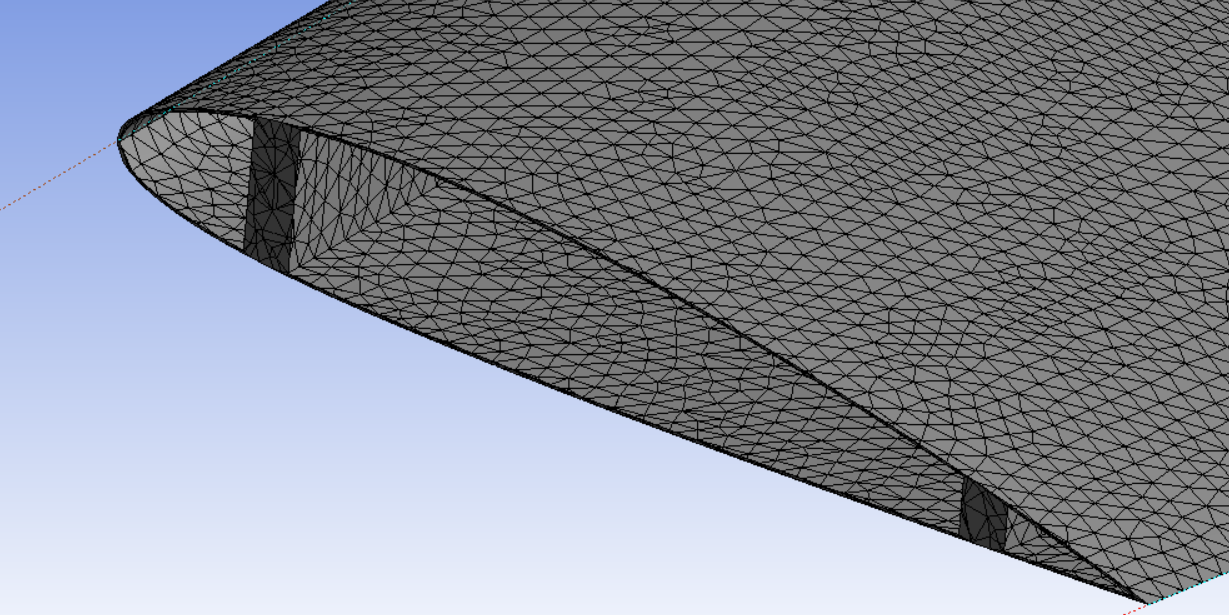-
-
May 9, 2021 at 3:50 am
xuduan
SubscriberI would like to do a coupled CFD, and structural analysis of an aircraft wing. However, I've been having trouble with the solution time for my transient analysis. I believe this is due to the thin skin over the wing which distorts the mesh.
Can anyone provide some suggestions regarding the modeling/meshing to reduce the computational time?
May 9, 2021 at 5:22 pmpeteroznewman
SubscriberOpen the geometry in SpaceClaim and on the Prepare tab use the Midsurface button. Convert the skin solid to a surface. Convert the rib solid to a surface. Extend the surfaces on the Repair tab until you have a surface model of the wing.
May 11, 2021 at 5:42 amxuduan
SubscriberI tried using the midsurface command in DesignModeler and it gives me poor results. I want to be able to leave everything in DM so since I want to run this using ANSYS batch mode.
May 11, 2021 at 12:37 pmpeteroznewman
SubscriberYou can do this in DesignModeler. Creating a surface model is required to reduce the solution time in transient structural. Show the model tree in DesignModeler. Where did the wing profile come from? Was it a collection of points that a curve was drawn through? Extrude that curve and there is your first surface. Create a surface at the center of each rib, there is your ribs. You just need to start over on the geometry.
Viewing 3 reply threads- The topic ‘Best Way To Mesh An Aircraft Wing With Ribs’ is closed to new replies.
Ansys Innovation SpaceTrending discussionsTop Contributors-
3597
-
1283
-
1117
-
1068
-
983
Top Rated Tags© 2025 Copyright ANSYS, Inc. All rights reserved.
Ansys does not support the usage of unauthorized Ansys software. Please visit www.ansys.com to obtain an official distribution.
-
The Ansys Learning Forum is a public forum. You are prohibited from providing (i) information that is confidential to You, your employer, or any third party, (ii) Personal Data or individually identifiable health information, (iii) any information that is U.S. Government Classified, Controlled Unclassified Information, International Traffic in Arms Regulators (ITAR) or Export Administration Regulators (EAR) controlled or otherwise have been determined by the United States Government or by a foreign government to require protection against unauthorized disclosure for reasons of national security, or (iv) topics or information restricted by the People's Republic of China data protection and privacy laws.












